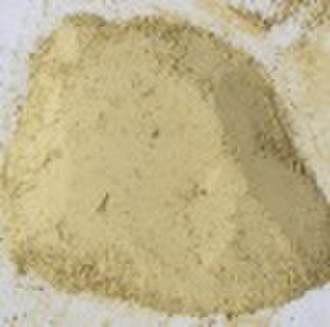Mancozeb

David Meng
联系人姓名
基本信息
| 分类 | Fungicide |
|---|---|
| 化学文摘社编号. | [8018-01-7] |
| 小额信贷 | [C4H6MnN2S4]xZny |
| 出生地 | China (Mainland) |
| 适用 | Fungicide |
Detailed Product DescriptionMancozeb 85%Tech; Mancozeb 80%WP / 75%WP; Mancozeb 43%SC;Classification: Fungicide Common name mancozeb (BSI, E-ISO); mancozèbe ((m) F-ISO); manzeb (JMAF)IUPAC name manganese ethylenebis(dithiocarbamate) (polymeric) complex with zinc saltChemical Abstracts name O,O-dimethyl S-[2-(methylamino)-2-oxoethyl] phosphorodithioateCAS RN [8018-01-7] (formerly [8065-67-6]); number also applies to other mixed manganese and zinc ethylenebis(dithiocarbamate) complexes Formulation types:DP; DS; OD; SC; WG; WP. Molecular formula: [C4H6MnN2S4]xZny Molecular weight: 271.2 (based on Composition) Properties: Greyish-yellow, free flowing powder with a slight odour of hydrogen sulfide. Toxicity: Reviews FAO/WHO 68, 70 (see part 2 of the Bibliography). Oral Acute oral LD50for rats >5000 mg/kg. Skin and eye Acute percutaneous LD50for rats >10 000, rabbits >5000 mg/kg. No irritation to skin (rabbits); moderate eye irritant (rabbit, EU standards), not an eye irritant (rabbit, U.S. standards) No dermal sensitisation in Buehler test; may cause dermal sensitisation in guinea pig maximisation test. Inhalation LC50(4 h) for rats >5.14 mg/l. NOEL NOEL for rats 4.0 mg/kg b.w. daily. NOAEL for ethylenethiourea 0.37 mg/kg b.w. daily. Below toxic levels, mancozeb was observed to have no effect on reproduction, on neonatal survival, or on growth. ADI (JMPR) 0.03 mg/kg b.w. (group ADI with maneb, metiram and zineb); ethylenethiourea 0.004 mg/kg b.w. [1993]; mancozeb 0.05 mg/kg b.w. Other At very high, maternally toxic levels, mancozeb has caused birth defects in test animals; ethylenethiourea, a trace contaminant and breakdown product of mancozeb, has caused thyroid effects, tumours and birth defects in laboratory animals. Toxicity class WHO (a.i.) U; EPA (formulation) IV EC classification Xi; R37| R43 Uses: Fungicide with protective action. Control of many fungal diseases in a wide range of field crops, fruit, nuts, vegetables, ornamentals, etc. More frequent uses include control of early and late blights (Phytophthora infestans and Alternaria solani) of potatoes and tomatoes; downy mildew (Plasmopara viticola) and black rot (Guignardia bidwellii) of vines; downy mildew (Pseudoperonospora cubensis) of cucurbits; scab (Venturia inaequalis) of apple; sigatoka (Mycosphaerella spp.) of banana and melanose (Diaporthe citri) of citrus. Typical application rates are 1500-2000 g/ha. Used for foliar application or as a seed treatment. Packing: According to the customer's request
付款条款
Letter of credit
Telegraphic transfer
Western Union
-
支付方式
我们接受:









